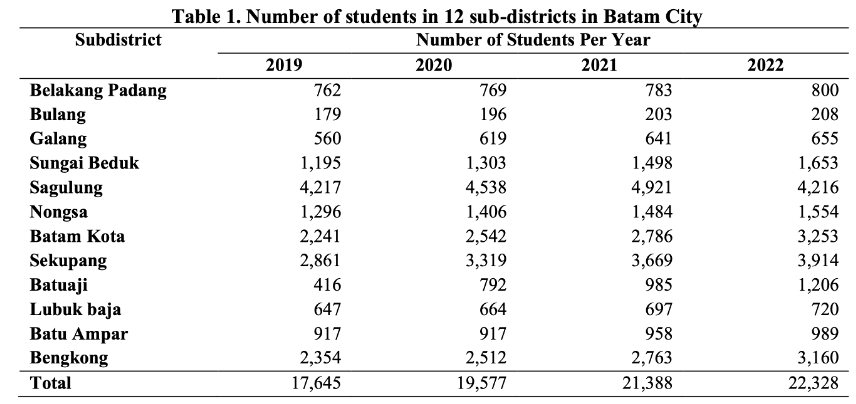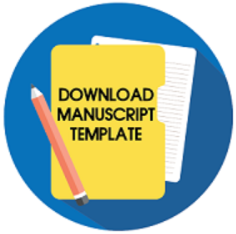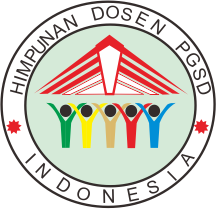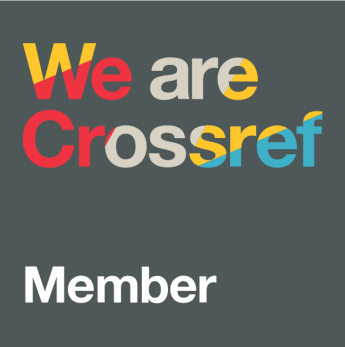Forecasting Batam City Secondary School Enrolments in 2035: Implementing Double Brown Exponential Smoothing

Downloads
Downloads
Aaronson, D., Barrow, L., & Sander, W. (2007). Teachers and student achievement in the Chicago public high schools. Journal of labor Economics, 25(1), 95-135. https://econpapers.repec.org/article/ucpjlabec/v_3a25_3ay_3a2007_3ap_3a95-135.htm
Ajani, I. R., & Akinyele, O. B. (2014). Effects of student-teacher ratio on academic achievement of selected secondary school students in Port Harcourt Metropolis, Nigeria. Journal of Education and Practice, 5(24), 100-106. https://www.iiste.org/Journals/index.php/JEP/article/view/15263
Alladatin, J., Lionel, R., & Insaf, A.- chikh. (2023). School principal’s training programs, challenges, and improvement opportunities: rapid review. International Journal of Educational Innovation and Research, 3(1), 17–26. https://doi.org/10.31949/ijeir.v3i1.6830
Alsaleh, A., Alabdulhadi, M., & Alrwaished, N. (2017). Impact of peer coaching strategy on pre-service teachers’ professional development growth in Kuwait. International Journal of Educational Research, 86, 36-49. https://doi.org/10.1016/j.ijer.2017.07.011
Anderson E. R., & Dobie T. E. (2022). Sentence stems to foster dialogue: Uses of “I notice” and “I wonder” in online teacher professional development. Journal of Teacher Education, 73(4), 424–437. https://doi.org/10.1177/00224871221087198
Andersson, H., & Bergman, L. R. (2011). The role of task persistence in young adolescence for successful educational and occupational attainment in middle adulthood. Developmental Psychology, 47(4), 950.https://doi.org/10.1037/a0023786
Arnett, J. J. (2001). Conceptions of the transition to adulthood: Perspectives from adolescence through midlife. Journal of adult development, 8, 133-143. https://psycnet.apa.org/doi/10.1023/A:1026450103225
Azhari, U. L., & Kurniady, D. A. (2016). Management of educational financing, learning facilities, and school quality. Jurnal Administrasi Pendidikan, 13(2). https://doi.org/10.17509/jap.v23i2.5631
Brilatin, A., & Wibowo, S. E. (2024). Elementary teacher leadership of pioneer teacher program alumnae in Yogyakarta City. Jurnal Prima Edukasia, 12(1), 129-139. https://doi.org/10.21831/jpe.v12i1.69044
Chapman, D. W., & Adams, D. K. (2002). The quality of education: Dimensions and strategies. Hong Kong: Asian Development Bank.
Connor, K. E., Ray, A. B., & Price, R. A. (2025). Educational leaders’ insights on PBPD, implementation, and sustainability practices of SRSD, a writing EBP. Journal of School Leadership, 35(1), 23-42. https://doi.org/10.1177/10526846241292633
Démurger, S. (2001). Infrastructure development and economic growth: An explanation for regional disparities in China? Journal of Comparative economics, 29(1), 95-117. https://doi.org/10.1006/jcec.2000.1693
Djanggih, H., & Salle, S. (2017). Legal aspects of land acquisition for development in the public interest. Pandecta Research Law Journal, 12(2), 165-172. https://doi.org/10.15294/pandecta.v12i2.11677
Dor-Haim P. (2022). The experience of loneliness among school principals: Episodic loneliness versus persistent day-to-day loneliness. Journal of Educational Administration, 60(5), 527–541. https://doi.org/10.1108/jea-11-2021-0204
Esling, P., & Agon, C. (2012). Time-series data mining. ACM Computing Surveys (CSUR), 45(1), 1-34. https://doi.org/10.1145/2379776.2379788
Firdaus, F. M., Afianti, D., Cahya, R., & Septianingtias, A. (2022). The use of macromedia flash application in improving the mathematical understanding of elementary school students. Jurnal Prima Edukasia, 10(2), 114-122. https://doi.org/10.21831/jpe.v10i2.47427
Fletcher-Wood H., Zuccollo J. (2020). The effects of high-quality professional development on teachers and students: A rapid review and meta-analysis. The Education Policy Institute. https://hdl.voced.edu.au/10707/531978
Fry, R. A. (2005). The high schools Hispanics attend: Size and other key characteristics. Pew Hispanic Center.
Fu, T. C. (2011). A review on time series data mining. Engineering Applications of Artificial Intelligence, 24(1), 164-181. https://doi.org/10.1016/j.engappai.2010.09.007
Habibullah, H., Durahim, Y., Pamungkas, T., Haryundari, M. L. I., & Rusnila, R. (2022). The effect of motivation on students’ mathematics learning outcomes in the new normal era. Jambura Journal of Mathematics Education, 3(2), 63-69. https://doi.org/10.34312/jmathedu.v3i2.15114
Hanushek, E. A. (2005). Why Quality. Finance & Development, 15. https://www.imf.org/external/pubs/ft/fandd/2005/06/hanushek.htm
Haverly C., Calabrese Barton A., Schwarz C. V., Braaten M. (2020). “Making space”: How novice teachers create opportunities for equitable sense-making in elementary science. Journal of Teacher Education, 71(1), 63–79. https://doi.org/10.1177/0022487118800706
Horner, M., & Jordan, D. D. (2020). The partnership imperative for preparing effective principals in North Carolina schools. Journal of Organizational and Educational Leadership, 5(2). https://eric.ed.gov/?id=EJ1261266
Huang, J. Y., & Wey, W. M. (2019). Application of big data and analytic network process for the adaptive reuse strategies of school land. Social Indicators Research, 142, 1075-1102. https://doi.og/10.1007/s11205-018-1951-y
Jhon, W., Zubaidah, E., & Mustadi, A. (2021). Challenges in the implementation of character education in elementary school: Experience from Indonesia. Ilkogretim Online, 20(1). https://ilkogretim-online.org/index.php/pub/article/view/3716
Kafa, A. (2023). Teachers' perceptions of school principals' role in tackling the pandemic crisis. International Journal of Educational Management, 37(2), 350-360. https://doi.org/10.1108/IJEM-02-2022-0056
Karakose, T., Kocabas, I., Yirci, R., Papadakis, S., Ozdemir, T. Y., & Demirkol, M. (2022). The development and evolution of digital leadership: A bibliometric mapping approach-based study. Sustainability, 14(23), Article 23. https://doi.org/10.3390/su142316171
Karakose, T., Polat, H., & Papadakis, S. (2021). Examining teachers’ perspectives on school principals’ digital leadership roles and technology capabilities during the COVID-19 pandemic. Sustainability, 13(23), 13448. https://doi.org/10.3390/su132313448
Kawuryan, S. P. (2024). Exploring the integration of technology in learning practices: Study of faculty candidates. Jurnal Prima Edukasia, 12(2). https://journal.uny.ac.id/index.php/jpe/article/view/74253
Leventhal, T., Graber, J. A., & Brooks‐Gunn, J. (2001). Adolescent transitions to young adulthood: Antecedents, correlates, and consequences of adolescent employment. Journal of Research on Adolescence, 11(3), 297-323. https://psycnet.apa.org/doi/10.1111/1532-7795.00014
Lidyasari, A. T., Rachmawati, I., Costa, A. D., & Wanyi, P. (2022). How are the cognitive, affective, and psychomotor levels of primary school learners living in suburban area of Yogyakarta based on career development. Jurnal Prima Edukasia, 10(2), 130-137. https://doi.org/10.21831/jpe.v10i2.48061
Lutz, W., & KC, S. K. (2013). Demography and human development: Education and population projections. UNDP-HDRO Occasional Papers, (2013/04). https://papers.ssrn.com/sol3/papers.cfm?abstract_id=2344470
Malihah, E. (2015). An ideal Indonesian in an increasingly competitive world: Personal character and values required to realize a projected 2045 ‘Golden Indonesia’. Citizenship, Social and Economics Education, 14(2), 148-156. https://doi.org/10.1177/2047173415597143
Masyhur, H. J. (2022). Land conflict resolution for alternative road infrastructure development (case study of land acquisition in Mekarsari Village). Juridicia: Jurnal Fakultas Hukum Universitas Gunung Rinjani, 4(1), 1-12. https://doi.org/10.46601/juridica.v4i1.210
Maulidah, F., Maulina, H., Alfiana, L., Dardiri, M. N., & Nurpratiwi, H. (2023). Land dispute between communities and government (Case study: PUPR agency development in East Java). Dewantara: Jurnal Pendidikan Sosial Humaniora, 2(2), 102-113. DOI: https://doi.org/10.30640/dewantara.v2i2.1022
McKeown D., Brindle M., Harris K. R., Sandmel K., Steinbrecher T. D., Graham S., Lane K. L., Oakes W. P. (2019). Teachers’ voices: Perceptions of effective professional development and classwide implementation of self-regulated strategy development in writing. American Educational Research Journal, 56(3), 753–791. https://doi.org/10.3102/0002831218804146
Mumpuniarti, M., Budiningsih, C. A., Andini, D. W., & Rahayu, A. (2019). Perspective parents toward students diversity in inclusive education elementary school. Jurnal Prima Edukasia, 7(2), 139-149. https://doi.org/10.21831/jpe.v7i2.26937
Neel, M., Johnson, H. J., & Neal, K. W. (2024). Leading by looking and listening: Observation framework to support equitable and ambitious teaching and learning. Journal of School Leadership, 0(0). https://doi.org/10.1177/10526846241307625
Nishom, M., & Wibowo, D. S. (2018). Implementation of chi-square-based k-means method in decision support system for identifying teacher needs disparities. Jurnal Sistem Informasi Bisnis, 8(2), 1-8. https://doi.org/10.21456/vol8iss2pp187-194
Pamungkas, T. (2012). Implementation of chi-square-based k-means method in decision support system for identifying teacher needs disparities. Jurnal Dimensi, 1(2). https://doi.org/10.33373/dms.v1i2.173
Prananto, I. W., Rakhmawati, Y., & Pamungkas, T. (2022). Content Validity Ratio (CVR), Content Validity Index (CVI) and Confirmatory Factor Analysis (CFA) in mathematics learning independence instruments. Kontinu: Jurnal Penelitian Didaktik Matematika, 6(2), 116-132. http://dx.doi.org/10.30659/kontinu.6.2.116-132
Rofiah, N. H., Restiana, R., & Dewi, R. (2024). Promoting digital literacy: Assessing teachers readiness in utilizing information and communication technology for learning in rural area. Jurnal Prima Edukasia, 12(1), 41-51. https://doi.org/10.21831/jpe.v12i1.63968
Rohaedi, E., Insan, I. H., & Zumaro, N. (2019). Mechanism of land acquisition for the public interest. Palar: Pakuan Law Review, 5(2),1-12. https://journal.unpak.ac.id/index.php/palar/article/view/1192
Rudolph, K. D., Lambert, S. F., Clark, A. G., & Kurlakowsky, K. D. (2001). Negotiating the transition to middle school: The role of self‐regulatory processes. Child Development, 72(3), 929-946. https://doi.org/10.1111/1467-8624.00325
Sahara, W., Yamin, M., Zaidar, Z., & Kaban, M. (2023). Compensation for losses related to land acquisition for the Batang Bayang irrigation development project. Locus Journal of Academic Literature Review, 2(4), 343–354. https://doi.org/10.56128/ljoalr.v2i4.152
Saptono, B. (2022). Implications of child-friendly school policies in reducing cases of violence against children in elementary schools. Jurnal Prima Edukasia, 10(1), 96-103. https://doi.org/10.21831/jpe.v10i1.45816
Schwarz C. V., Braaten M., Haverly C., de los Santos E. X. (2021). Using sense-making moments to understand how elementary teachers’ interactions expand, maintain, or shut down sense-makingin science. Cognition and Instruction, 39(2), 113–148. https://doi.org/10.1080/07370008.2020.1763349
Shaturaev, J. (2021). Indonesia: Superior policies and management for better education (Community development through Education). Архив научных исследований, 1(1). https://www.researchgate.net/publication/357271101_INDONESIA_SUPERIOR_POLICIES_AND_MANAGEMENT_FOR_BETTER_EDUCATION_Community_development_through_Education
Skousen, J. D., Weiler, S. C., Boren, D., Pesci, B., Johnson, A., Antivilo, K., ... & Crandall, N. (2025). Reflections about educational leadership: Leadership lessons learned from school building leaders at the end of a career in public education. Journal of School Leadership, 35(2-3), 95-118. https://doi.org/10.1177/10526846241298645
Copyright (c) 2025 Jurnal Prima Edukasia

This work is licensed under a Creative Commons Attribution-ShareAlike 4.0 International License.
The copyright of the received article shall be assigned to the journal as the publisher of the journal. The intended copyright includes the right to publish the article in various forms (including reprints). The journal maintains the publishing rights to the published articles.

Jurnal Prima Edukasia by http://journal.uny.ac.id/index.php/jpe/index is licensed under a Creative Commons Attribution-ShareAlike 4.0 International License.


























